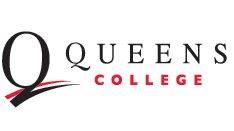
Publications and Research
Document Type
Article
Publication Date
September 2014
Abstract
Sphingosine 1-phosphate (S1P) is a bioactive lipid that is formed by the phosphorylation of sphingosine and catalysed by sphingosine kinase 1 (SK1) or sphingosine kinase 2 (SK2). Sphingosine kinases play a fundamental role in many signaling pathways associated with cancer, suggesting that proteins belonging to this signaling network represent potential therapeutic targets. Over the last years, many improvements have been made in the treatment of T-cell acute lymphoblastic leukemia (T-ALL); however, novel and less toxic therapies are still needed, especially for relapsing and chemo-resistant patients. Here, we analyzed the therapeutic potential of SKi and ROMe, a sphingosine kinase 1 and 2 inhibitor and SK2-selective inhibitor, respectively. While SKi induced apoptosis, ROMe initiated an autophagic cell death in our in vitro cell models. SKi treatment induced an increase in SK1 protein levels in Molt-4 cells, whereas it activated the endoplasmic reticulum (ER) stress/unfolded protein response (UPR) pathway in Jurkat and CEM-R cells as protective mechanisms in a sub-population of T-ALL cells. Interestingly, we observed a synergistic effect of SKi with the classical chemotherapeutic drug vincristine. In addition, we reported that SKi affected signaling cascades implicated in survival, proliferation and stress response of cells. These findings indicate that SK1 or SK2 represent potential targets for treating T-ALL.


Comments
This work was originally published in Oncotarget.